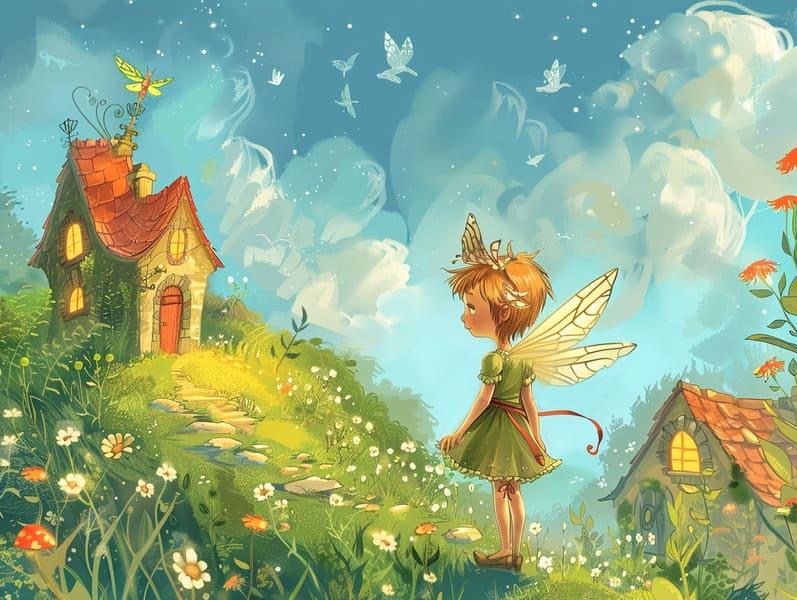Exploring the Roots of Classic Fairy Tales and Its Unfading Enchantment.
Exploring the Roots of Classic Fairy Tales and Its Unfading Enchantment.
Blog Article

Grimm's fairy tales have old origins. These stories have been narrated from one generation to the next millennia before they were ever recorded. They sprang from a variety of societies, including European traditions. They were initially passed along among elders, often carrying themes and messages related to the societal norms and beliefs of the time.
The renowned Brothers Grimm, Jacob and Wilhelm, were among the first to assemble many of these beloved narratives. Their published works, "Grimm's Fairy Tales," included stories like "The Little Glass Slipper," "Little Brother and Little Sister," and "The True Story of Snow White," which have since become cornerstones in the world of traditional fairy tales. Similarly, Hans Andersen's fanciful tales, such as "The Story of the Little Mermaid," and "The Duckling that Could," have touched hearts worldwide, ensuring their place in the pantheon of timeless fairy tales.
Though they are old, these stories remain as pertinent as ever, especially as nighttime stories for kids. These enchanting tales are now available in diverse formats, including vividly illustrated books, charming animations, and digital fairy tales.
Their lasting presence can be traced to several charming aspects:
Moral Lessons: Classic fairy tales often whisper important moral lessons. Tales like "The Wolf and the Liar" teach the value of sincerity, while "The Tortoise and the Hare" exemplify the qualities of steadfastness and unassuming nature. These stories offer little ones clear distinctions between moral and immoral, developing their moral compass in a gentle yet important way.
Kindness and Comprehension: Traditional fairy tales frequently showcase characters facing difficulties and adversities, fostering young listeners to comprehend with their struggles and cheer for their triumphs. For instance, "Beauty and the Beast" teaches us the virtue of seeing beyond looks to perceive the true being of a character, developing understanding and recognition.
Cultural Perception: Many ancient fairy tales are infused with the cultural contexts from which they came. Engaging with these fairy tales can provide fascinating glimpses into different beliefs, nurturing a sense of cultural appreciation and comprehension.
Imagination and Creativity: The extraordinary elements in ancient fairy tales—magical kingdoms—promote children’s imaginative ideas. These stories carry readers to magical realms, generating fantasy dreams and a sense of awe that endures a lifetime.
Traditional fairy tales are not only alluring but also educational. They function as fantastical tools in cultivating various thinking and feeling skills in little ones. When traditional fairy tales are recited, they foster speech development by presenting new vocabulary and complex sentence structures. This practice also promotes auditory perception and mental focus, as young ones remain attentive, enthusiastic to see what happens next.
Furthermore, analyzing the themes and characters of timeless fairy tales can foster problem-solving abilities and thinking skills. Children are shown to pinpoint patterns, anticipate outcomes, and make sense of cause and effect. These deliberations also support children voice their thoughts and feelings, strengthening their emotional intelligence.
In today’s digital era, the availability of digital fairy tales has made these tales more within reach than ever. Web-based platforms and digital apps share vast collections of famous fairy tales that can be seen or listened via anytime, anywhere. Fairy tales told out loud are particularly liked, offering an fascinating method for little ones to relish these magical stories. Audiobooks and narrated videos transport characters and settings to life, often joined by delightful musical scores and find it here harmonies that heighten the narrative adventure.
The unending appeal of traditional fairy tales lies in their ability to adapt to today's world while staying true to their fundamental ideas. Contemporary reimaginings of these stories often feature more multicultural figures and modern settings, making them pertinent to today’s audience. However, the core values of courage, understanding, and righteousness remain unchanged, continuing to reach audiences of all ages.
Fairy tales also offer a sense of serenity and predictability. They deliver up a systematic narrative with a evident beginning, middle, and end, often coming to a close with the settlement of conflicts and the triumph of virtue over wickedness. This uniformity can be reassuring for young ones, yielding a sense of assuredness in an fluid world.
Classic fairy tales continue to mesmerize and educate new generations, maintaining their beauty and value in modern society. As bedtime stories for kids, they feature a perfect blend of magic and knowledge, enhancing moral values, empathy, and creativity. The availability of free fairy tales online and the widespread nature of fairy tales read aloud warrant that these traditional fairy tales remain within reach to new generations.
By conserving and distributing these tales, we continue to revere the rich tapestry of folklore and cultural heritage. Whether you are reading a vividly illustrated book, discovering a web-based library, or hearing an voice book, the loveliness of timeless fairy tales is always within reach. These narratives reveal of the endless power of narratives and its ability to bond us across time and space.
Be it you are exploring a vividly illustrated book, discovering a cyber collection, or listening on an audio story, the charm of old fairy tales is always within reach.
These narratives demonstrate of the unending ability of stories and its ability to unify us across time and space, forming a connection that enchants and educates alike.